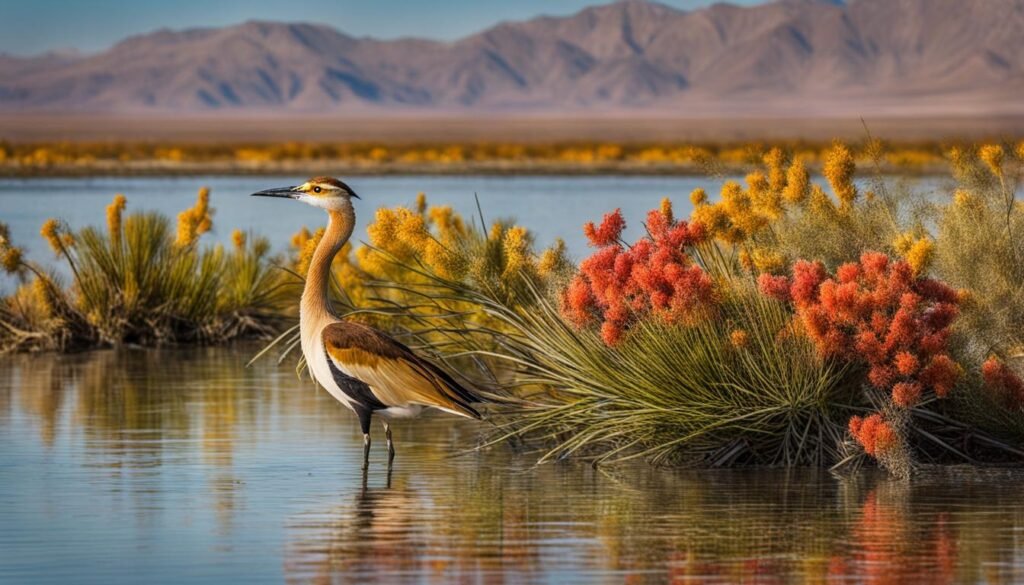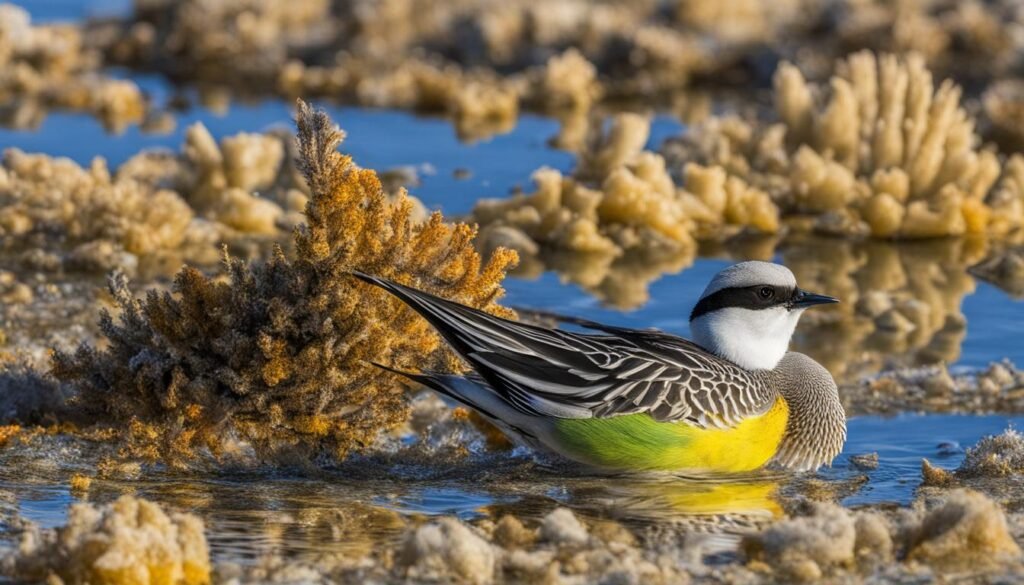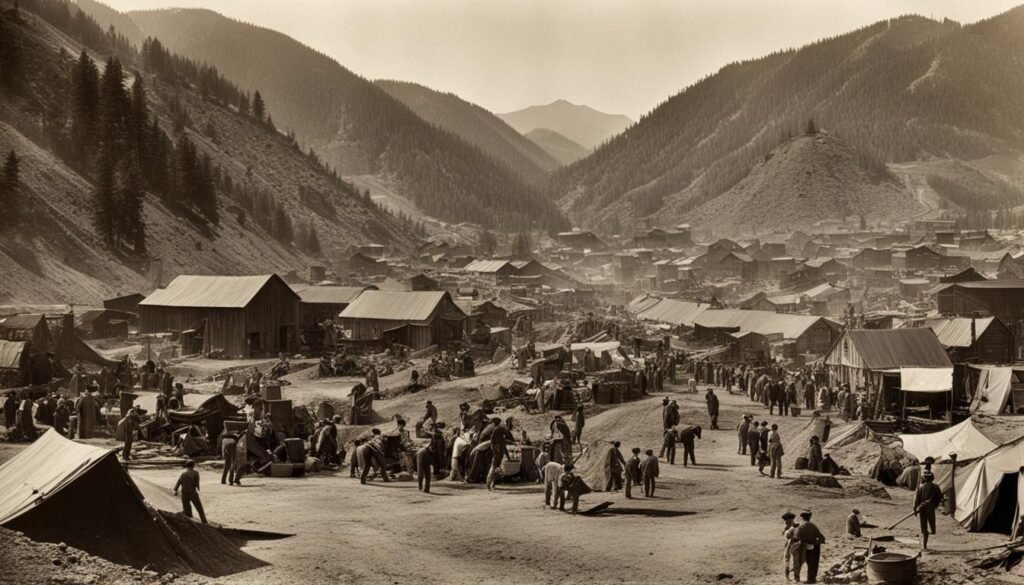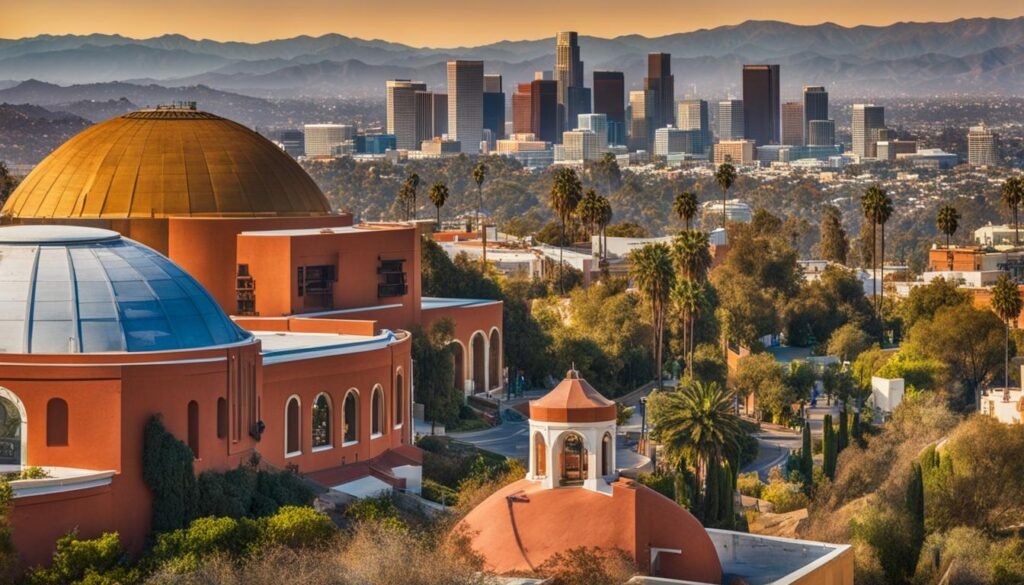Discover the captivating story of the Salton Sea, a fascinating lake tucked away in California. As someone who loves exploring natural wonders, I was intrigued by the rich history and ecological significance of this unique destination. Join me on a journey as we delve into the mysteries that surround the Salton Sea and uncover its vital role in supporting diverse wildlife.
Key Takeaways
- The Salton Sea is the largest lake in California and holds a significant place in the state’s history.
- Formed thousands of years ago, the lake’s water level has experienced cyclical behavior over time.
- The Salton Sea was a popular vacation spot in the mid-20th century, attracting celebrities and tourists alike.
- Today, the lake faces environmental challenges that require restoration efforts.
- Despite these challenges, the Salton Sea remains an important ecosystem supporting diverse wildlife.
The Enigma of the Salton Sea
The Salton Sea, with its fascinating history and captivating mysteries, continues to intrigue adventurers and history enthusiasts alike. One intriguing enigma lies in the petroglyphs discovered in the Jacumba Wilderness area. These ancient drawings depict what appears to be ancient ships, fueling speculations about possible Viking or Chinese explorations in the region.
Local legends also add to the allure of the Salton Sea, with tales of a buried ship lying hidden in the desert sands. These legends, combined with the lake’s connections to Spanish expeditions, create an aura of mystery and intrigue around its past.
During the mid-20th century, the Salton Sea flourished as a vibrant tourist destination, enticing visitors with its unique attractions and recreational opportunities. Celebrities like the Rat Pack and the Beach Boys were drawn to its shores, adding to its popularity and allure.
Today, the Salton Sea remains a place of interest and tourism, offering visitors a chance to explore its natural wonders. From the exceptional wildlife sightings to its breathtaking views, the Salton Sea continues to attract tourists. However, it also faces challenges stemming from environmental issues, threatening its delicate ecosystem.
As we delve deeper into the enigma of the Salton Sea, we unravel its secrets and strive to protect this remarkable destination for future generations.

The Ecological Importance of the Salton Sea
The Salton Sea is not just a historical and recreational site; it is also an essential ecosystem. This expansive lake supports a diverse range of wildlife, including migratory birds, fish, and other organisms. The lake’s shores play a crucial role as nesting and breeding grounds for various bird species, creating a thriving habitat for avian biodiversity.
One notable feature of the Salton Sea’s ecosystem is the presence of the Sonny Bono Salton Sea National Wildlife Refuge. This refuge provides protection and sanctuary for the lake’s wildlife populations, offering a safe haven for numerous species to thrive and reproduce. Under the refuge’s care, delicate ecosystems within the Salton Sea are preserved and nurtured.
The Salton Sea’s unique environmental conditions, such as its high salt content, pose both challenges and opportunities for the wildlife that inhabit the area. While high salinity may limit certain species’ ability to survive, it also creates a unique habitat that supports specialized organisms adapted to these conditions. The lake’s ecosystem is finely tuned to balance the delicate interplay between its inhabitants and the surrounding environment.
Overall, the Salton Sea’s ecological importance cannot be overstated. It serves as a vital stopover for migratory birds, providing crucial resources during their long journeys. The diverse wildlife and ecological interactions within the lake contribute to the overall health and resilience of the region’s ecosystems.

Environmental Challenges and Restoration Efforts
The Salton Sea is grappling with a range of significant environmental challenges that require immediate attention. As the water level of the lake recedes, it brings forth a host of issues, including escalating concentrations of salt and other pollutants. This has resulted in a deterioration of water quality, leading to devastating consequences such as mass die-offs of fish and declining populations of wildlife.
The exposure of the Salton Sea’s lakebed exacerbates the situation by producing aerosolized dust, which poses a serious health risk to nearby communities. Inhalation of this dust can lead to respiratory problems, further compounding the environmental concerns associated with the lake.
To tackle these pressing issues, ongoing efforts in restoration and preservation are being undertaken. Various restoration projects and initiatives have been implemented with the aim of safeguarding the delicate ecosystem of the Salton Sea, improving water quality, and minimizing the impact on local communities.
Restoration Projects and Initiatives
- Controlling Dust Emissions: Programs are in place to mitigate the dust emissions from the lakebed, including the use of earthworks and vegetation to stabilize the exposed areas and prevent dust from becoming airborne.
- Water Management: Monitoring and managing water inputs to the Salton Sea is crucial for maintaining a stable and sustainable ecosystem. Efforts are focused on ensuring adequate water inflow to prevent further decline in the water level.
- Habitat Restoration: Restoration projects aim to create and enhance habitats for a diverse range of species that depend on the Salton Sea. Wetland restoration and the development of artificial islands provide nesting and feeding grounds for birds and fish.
- Collaborative Partnerships: Government agencies, environmental organizations, and local communities are working together to shape restoration efforts. Their combined efforts ensure a comprehensive approach that addresses the environmental, social, and economic aspects of the Salton Sea.
By implementing these restoration projects and initiatives, there is hope that the Salton Sea can regain its ecological balance, improve water quality, and safeguard the health and well-being of the surrounding communities.
Conclusion
The Salton Sea, located in California, offers a captivating blend of history, mystery, and ecological significance. Visitors have the opportunity to explore its stunning beaches, witness its diverse wildlife, and immerse themselves in its unique charm.
However, the Salton Sea also faces pressing environmental challenges that cannot be ignored. The lake’s receding water levels have led to increased salt concentration and pollution, impacting water quality and resulting in detrimental effects on the ecosystem. Restoration efforts are crucial to preserving the delicate balance of this natural wonder.
Understanding the intricacies of the Salton Sea’s ecology and environmental issues is essential for safeguarding its future. By delving deeper into the enigma surrounding this extraordinary body of water, we can work towards sustainable solutions, ensuring the well-being of its surrounding communities and maintaining the ecological integrity of the area.
Embarking on a visit to the Salton Sea offers a unique opportunity to witness firsthand the wonders and challenges of this natural gem. A serene beach getaway combined with the fascinating documentary-like qualities of the landscape make the Salton Sea an unforgettable destination. With a map in hand, eager travelers can unravel the story of this historical and ecologically vital site, contributing to its preservation for generations to come.
FAQ
What is the history of the Salton Sea?
The Salton Sea, located in California, holds a rich history. It was formed thousands of years ago when the Colorado River diverted to the Salton Sink, a depression below sea level. The lake, once known as Lake Cahuilla, has seen cyclical behavior over time, with its water level rising and falling.
What are some attractions and tourism opportunities at the Salton Sea?
The Salton Sea was a thriving tourist destination in the mid-20th century, attracting celebrities like the Rat Pack and the Beach Boys. Today, it still offers unique attractions, including beaches for visitors to explore and experience its diverse wildlife.
How important is the Salton Sea in terms of ecology and wildlife?
The Salton Sea serves as an important ecosystem, supporting a diverse range of wildlife. It provides crucial nesting and breeding grounds for various bird species and is home to the Sonny Bono Salton Sea National Wildlife Refuge, which protects these wildlife populations.
What are the environmental challenges facing the Salton Sea?
The Salton Sea faces significant environmental challenges. Its receding water level has led to increased concentrations of salt and other pollutants, causing water quality issues. This has resulted in mass die-offs of fish and declines in wildlife populations. The exposed lakebed also produces aerosolized dust, posing health risks to nearby communities.
Are there any restoration efforts in place for the Salton Sea?
Yes, there are ongoing restoration projects and initiatives aimed at preserving the Salton Sea’s ecosystem, improving water quality, and mitigating the impact on local communities. These efforts are crucial for the long-term sustainability of the lake.
What can visitors do and see at the Salton Sea?
Visitors to the Salton Sea can explore its beaches, experience its diverse wildlife, and learn about its history and ecological importance. It offers unique opportunities for outdoor enthusiasts and nature lovers.







